
Lot 55
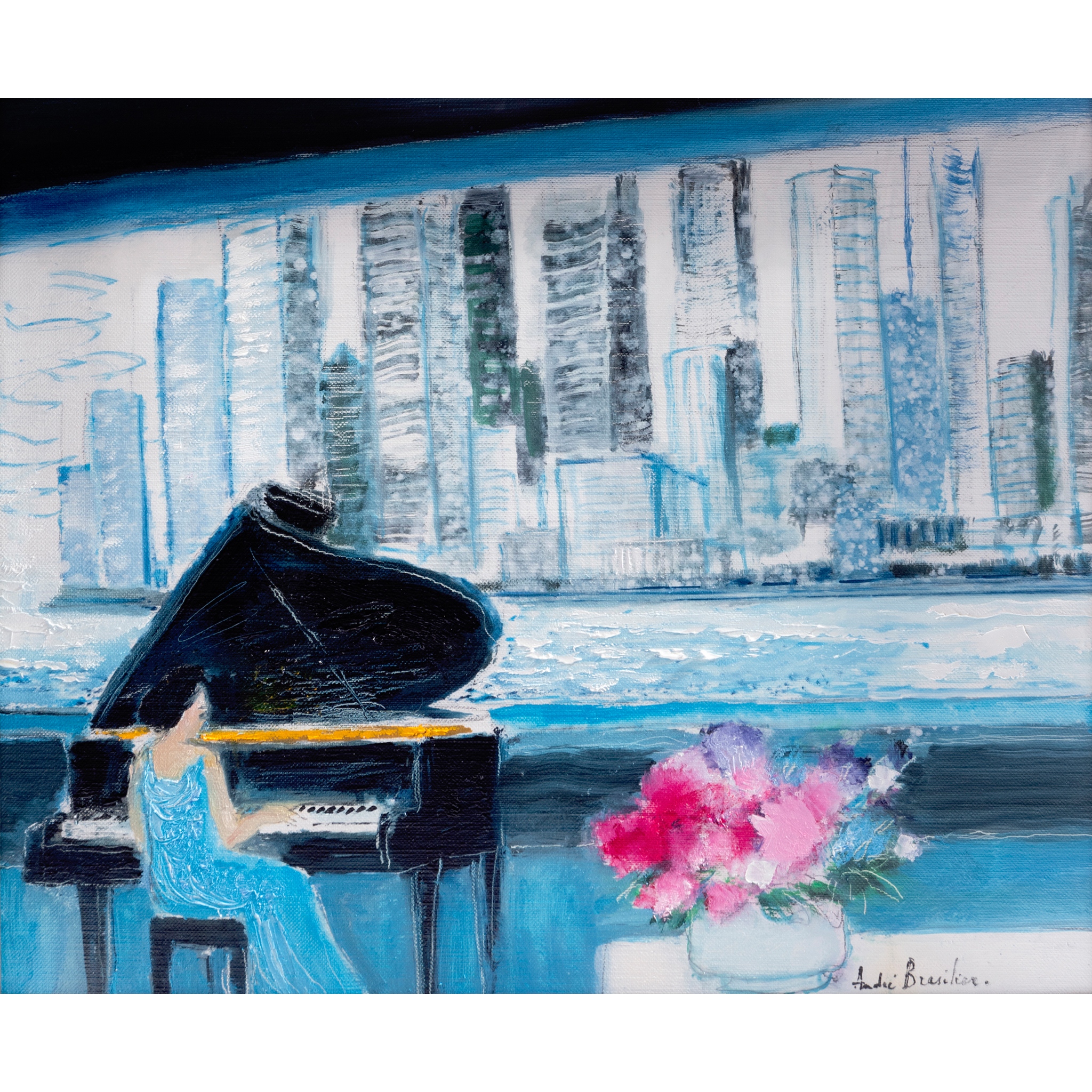
ANDRÉ BRASILIER (FRENCH 1929-) §
PIANO À NEW YORK, 2013
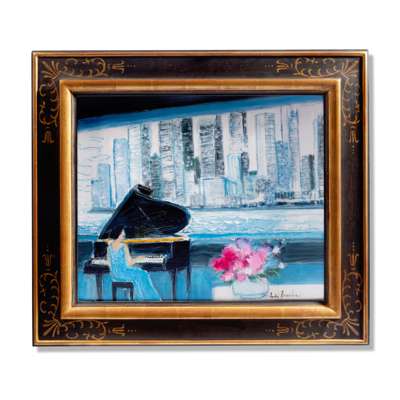
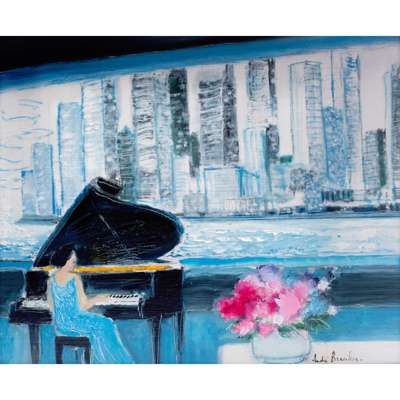
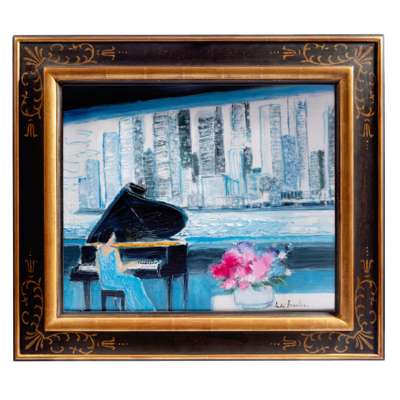
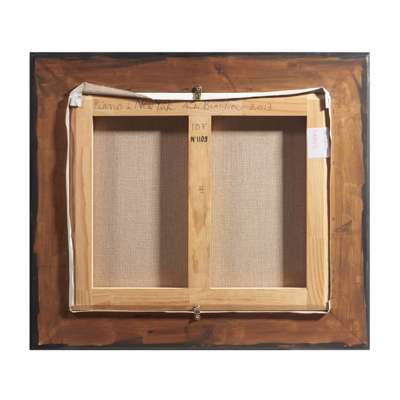


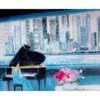
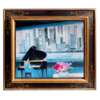

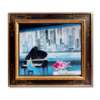
Auction: MODERN MADE Part I | 31 October 2024 | Lots 41 to 79
Description
signed (lower right), signed, inscribed and dated (to stretcher to reverse), oil on canvas
Dimensions
47cm x 55.5cm (18 ½in x 21 ¾in)
Provenance
with Opera Gallery, London, from whom acquired by the present owner.
Footnote
These two paintings by André Brasilier (lots 54 and 55) speak to a number of important themes in the renowned, nonagenarian French artist’s work – nature (here in the form of flowers), music, musicians and the female figure in an interior (usually a stylised ‘portrait’ of his wife and muse Chantal). Chantal is often depicted arranging flowers and the present works are linked by the joyous floral presentations that vie for our attention equally with the figures, to the point that they become counterpart expressions of their emotional state.
Rêverie Bleue and Pianiste à New York are painted in Brasilier’s signature soft tones, dominated by blue, which lends them a dreamlike quality and a sensual coolness. Blue was, of course, the colour beloved by Matisse, whose influence on Brasilier is clear and unabashed. He deliberately aims for the romanticism, the lightness of touch of Matisse’s later years on the Côte d’Azur, as well as some of the calme, luxe et volupté of the Post-Impressionists in general – although in Brasilier the luxe et volupté are held in check a little more. There is a quiet restraint to his romanticism, which finds expression in the thin, almost dry application of paint in a work such as Rêverie Bleue. Pianiste à New York has a heavier weighting of paint, a little more luxe appropriate to the energy of the city.
Through the inspiration of Matisse and other Post-Impressionists, there is also a strong element of Japonisme to Brasilier’s style – especially in his printmaking, of which he is a master. Like Hokusai or Hiroshige, he plays with clean, sinuous outlines that enclose areas of flat colour, where space and depth are described more by juxtaposing light and dark shapes than through shadow. He also uses the classic ukiyo-e technique of pushing the composition to the edges of the picture plane, with unusual crops, to create the sense of a world glimpsed (although a world that has arranged itself ‘accidentally’ into beautiful proportion and harmony).
Brasilier was born in Saumur, France in 1929, into a family of painters. Saumur is on the edge of the countryside, which was to become a lifelong source of inspiration – alongside that of the city, these two seemingly opposite sites of enquiry seamlessly interwoven in his art. Brasilier studied at the Ecole des Beaux-Arts in Paris. In 1952, he received the Florence Blumenthal Award and in 1953 the Prix de Rome, which led him to stay in Italy from 1954 to 1957, before returning to Paris where he still lives and works. Brasilier had his first retrospective at Château de Chenonceau in 1980, with further retrospectives at the Musée Picasso-Château Grimaldi in Antibes in 1988, the State Hermitage Museum in Saint Petersburg in 2005 and the Museum Haus Ludwig für Kunstausstellungen in Saarlois, Germany, in 2007.









